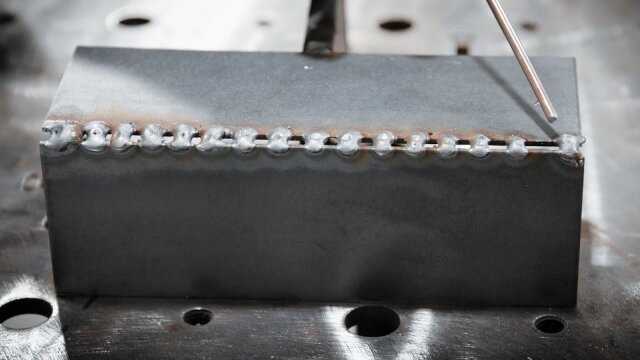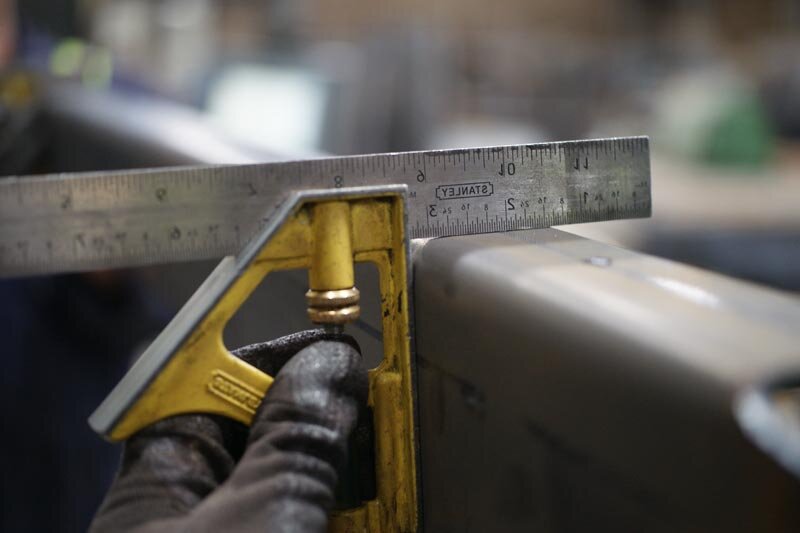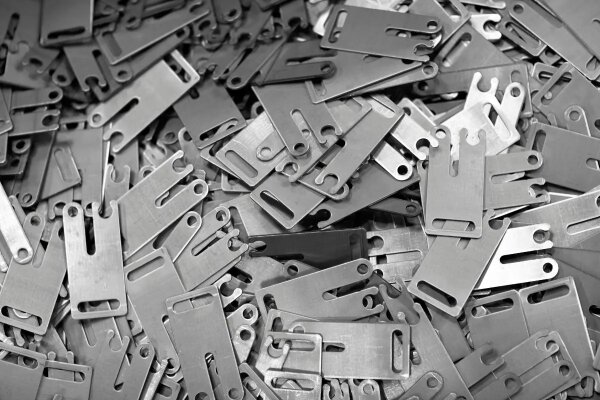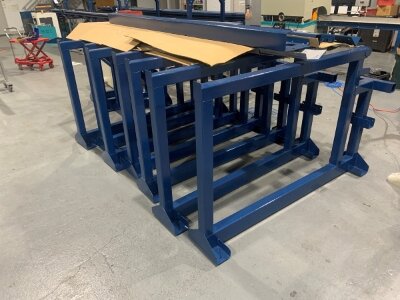Stal rdzewieje w kontakcie z powietrzem i wodą, co powoduje problemy w wielu projektach metalowych. Jeśli wytwarzasz produkty, potrzebujesz stali, która poradzi sobie w trudnych warunkach. Zarówno stal ocynkowana, jak i galwanizowana pomagają poprzez dodanie warstwy ochronnej. Aby wybrać właściwą, warto zrozumieć, jak działa każdy typ i gdzie każdy z nich jest najbardziej skuteczny.
Stal galwanizowana ma powłokę z czystego cynku, która zapewnia silną ochronę przed rdzą i błyszczący wygląd. Z kolei stal galwanizowana jest poddawana obróbce cieplnej po nałożeniu powłoki cynkowej, dzięki czemu jest matowa, twardsza i łatwiejsza do malowania. Stal ocynkowana sprawdza się dobrze w wilgotnych miejscach lub tam, gdzie wygląd ma znaczenie. Stal galwanizowana jest najlepsza, gdy potrzebna jest powierzchnia odporna na farbę lub zadrapania.
Znajomość różnic między nimi jest niezbędna do uniknięcia problemów podczas produkcji. Przeanalizujmy podstawy, aby wybrać lepszą opcję dla swojego projektu.
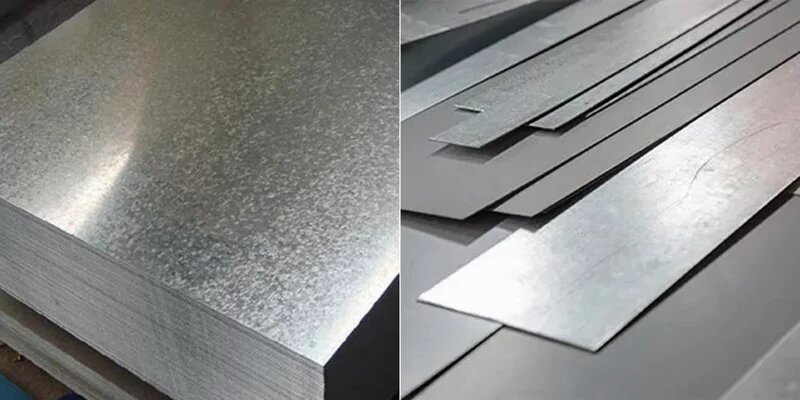
Czym jest stal ocynkowana?
Stal galwanizowana to stal pokryta cynkiem, aby zapobiec rdzewieniu. Powłoka ta jest nakładana poprzez zanurzenie stali w stopionym cynku. Warstwa cynku pokrywa powierzchnię, zapobiegając przedostawaniu się wilgoci i powietrza do stali znajdującej się pod spodem.
Powłoka cynkowa chroni metal. Jeśli powierzchnia zostanie zarysowana, cynk nadal walczy z rdzą, poddając się jako pierwszy. Nazywa się to ochroną ofiarną.
Proces rozpoczyna się od oczyszczenia stali. Usuwany jest wszelki brud lub olej, aby cynk mógł dobrze przylegać. Można to zrobić poprzez zanurzenie w roztopionym cynku lub nałożenie powłoki za pomocą prądu elektrycznego.
Proces galwanizacji
Galwanizacja chroni stal poprzez dodanie warstwy cynku. Warstwa ta blokuje dostęp wilgoci i tlenu do stali. Istnieją dwa główne sposoby nakładania cynku.
Cynkowanie ogniowe
Metoda ta polega na zanurzeniu stali w kąpieli stopionego cynku w wysokiej temperaturze. Cynk łączy się ze stalą, tworząc grubą, chropowatą powłokę. Tworzy ona silną ochronę i pokrywa stal równomiernie, nawet na krawędziach i narożnikach.
Powłoka ma błyszczące, mieniące się wykończenie. Jest odporna na trudne warunki, takie jak deszcz, śnieg i słone powietrze, i jest często używana w zastosowaniach zewnętrznych lub w ciężkich warunkach.
Cynkowanie elektrolityczne
Cynkowanie elektrolityczne wykorzystuje energię elektryczną do łączenia cynku ze stalą. Tworzy to cieńszą, gładszą powłokę o bardziej równomiernym wyglądzie.
Metoda ta zapewnia lepszą kontrolę nad grubością powłoki. Nadaje się do projektów, w których liczy się wygląd lub części muszą ściśle do siebie pasować. Oferuje jednak mniejszą odporność na korozję niż zanurzanie na gorąco.
Kluczowe właściwości stali galwanizowanej
- Odporność na rdzę: Powłoka cynkowa chroni stal przed wilgocią.
- Trwałość: Warstwa cynku może przyjmować uderzenia i nadal chronić stal.
- Niski koszt: Jest tańszy niż stal nierdzewna, ale nadal dobrze chroni.
- Błyszczące wykończenie: Wygląd spangled sprawia, że jest atrakcyjny w widocznych miejscach.
- Bezobsługowość: Raz nałożona powłoka rzadko wymaga poprawek lub napraw.
Typowe przypadki użycia
- Konstrukcje zewnętrzne: Ogrodzenia, barierki ochronne, znaki uliczne
- Materiały budowlane: Pokrycie dachu, konstrukcja stalowa, rynny
- Narzędzia rolnicze: Pojemniki na ziarno, zbiorniki na wodę, przyczepy
- Części samochodowe: Części podwozia narażone na brud i wodę
- Kanały HVAC: Tam, gdzie odporność na wilgoć jest kluczowa w pomieszczeniach
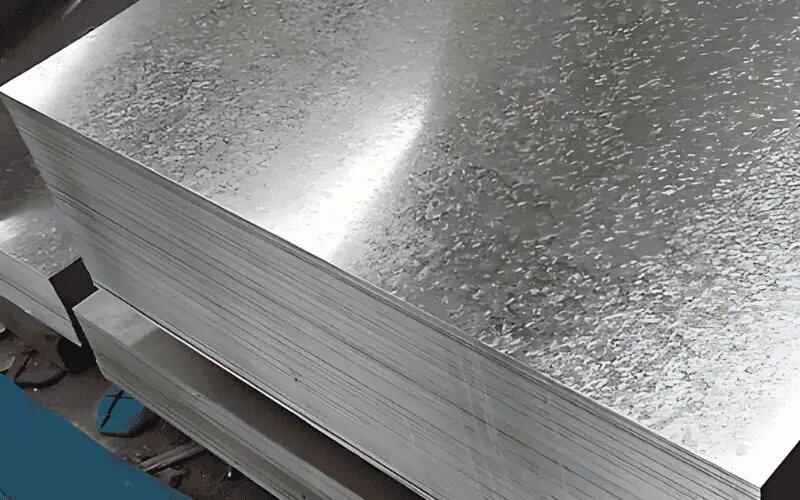
Czym jest stal galwanizowana?
Stal galwanizowana to stal, która została pokryta cynkiem, a następnie poddana obróbce cieplnej. Proces ten zmienia powierzchnię, czyniąc ją twardszą i lepszą do malowania.
Stal galwanizowana zaczyna się w taki sam sposób jak stal galwanizowana. Stal jest zanurzana w kąpieli stopionego cynku w celu nałożenia warstwy ochronnej.
Następnie przechodzi przez dodatkowy etap. Powlekana stal jest ponownie podgrzewana do temperatury około 500-565°C. Ciepło to powoduje mieszanie się cynku i żelaza, tworząc nową warstwę powierzchniową ze stopu cynku i żelaza.
Stop ten sprawia, że powierzchnia jest matowoszara i bardziej szorstka niż w przypadku zwykłej stali ocynkowanej. Nie jest ona błyszcząca, ale jest mocniejsza i łatwiej przylega do niej farba. Sprawia to, że stal galwanizowana jest lepszą opcją, gdy części będą malowane, utworzony, Lub spawane.
Tworzenie warstw stopu cynku i żelaza
Podczas obróbki cieplnej powłoka cynkowa reaguje z powierzchnią stali. Tworzy to serię warstw stopu cynku i żelaza. Warstwy te są ściśle związane ze stalą.
W przeciwieństwie do zwykłej stali ocynkowanej, powłoka ta nie znajduje się tylko na powierzchni. Staje się ona częścią zewnętrznej warstwy stali. Dlatego stal galwanizowana ma bardziej jednolite i matowe wykończenie. Jest również odporna na łuszczenie się podczas formowania lub spawania.
Kluczowe właściwości stali galwanizowanej
- Możliwość malowania: Chropowata powierzchnia dobrze trzyma farbę bez dodatkowych przygotowań.
- Odporność na zarysowania: Twarda warstwa cynkowo-żelazowa jest odporna na uszkodzenia podczas użytkowania.
- Spawalność: Spawa czyściej niż stal ocynkowana, z mniejszą ilością odprysków.
- Nie łuszczy się: Powłoka pozostaje na miejscu podczas gięcia lub formowania.
- Matowe wykończenie: Matowa szara powierzchnia jest idealna do malowania lub farba proszkowa.
Wspólne obszary zastosowań
- Panele samochodowe: Drzwi, maski, ramy, które wymagają farby i odporności na wgniecenia
- Urządzenia: Korpusy pralek i suszarek, panele sterowania
- Urządzenia przemysłowe: Szafki, obudowyi obudowy
- Części konstrukcyjne: Ramy wewnętrzne, ramy drzwi, ścianki działowe
- Skrzynki elektryczne: Malowane panele i skrzynki przyłączeniowe używany w pomieszczeniach
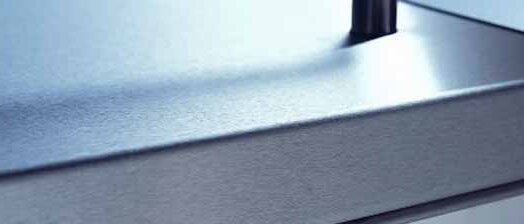
Kluczowe różnice między stalą ocynkowaną i galwanizowaną
Obie powłoki chronią stal przed rdzą, ale zachowują się inaczej w rzeczywistym użytkowaniu. Różnice wynikają ze sposobu ich wytwarzania i działania po przetworzeniu.
Skład i struktura powłoki
Stal galwanizowana ma na wierzchu warstwę czystego cynku. Cynk jest dodawany podczas procesu zanurzania i pozostaje na powierzchni.
Stal galwanizowana również zaczyna się od powłoki cynkowej. Poddawana jest jednak drugiemu etapowi podgrzewania. Ciepło to wciąga żelazo ze stali do warstwy cynku. Rezultatem jest stop cynku i żelaza, który jest twardszy i bardziej zintegrowany z powierzchnią.
Porównanie odporności na korozję
Stal galwanizowana zapewnia lepszą ochronę przed korozją, szczególnie w środowiskach zewnętrznych lub wilgotnych. Jej gruba warstwa cynku działa jak silna bariera.
Stal galwanizowana ma cieńszą powłokę. Nadal chroni ona przed rdzą, ale lepiej nadaje się do użytku w pomieszczeniach lub do malowania części.
Wygląd
Stal galwanizowana jest błyszcząca i ma teksturowany wygląd. Jest często używana w miejscach, w których wygląd ma znaczenie.
Stal galwanizowana jest matowoszara. Jednolite i matowe wykończenie sprawia, że jest łatwa do pomalowania, ale mniej atrakcyjna, gdy pozostaje surowa.
Formowalność i spawalność
Stal galwanizowana może łuszczyć się lub łuszczyć, jeśli jest zbyt mocno zgięta. Powłoka może pękać pod wpływem naprężeń.
Stal galwanizowana ma twardszą powłokę, która pozostaje na swoim miejscu. Lepiej radzi sobie z formowaniem i spawaniem. Utrata powłoki jest mniejsza, a spawy wytwarzają mniej oparów lub rozprysków.
Koszt
Stal ocynkowana jest zazwyczaj tańsza. Wymaga tylko jednego etapu - powlekania cynkiem - i jest produkowana w większych ilościach.
Stal ocynkowana kosztuje więcej ze względu na dodatkową obróbkę cieplną. Jednak ten dodatkowy koszt może zaoszczędzić czas i poprawić wyniki malowania lub spawania.
Stal ocynkowana a stal galwanizowana: Plusy i minusy
Każda powłoka ma swoje mocne i słabe strony. Decyzja powinna być dopasowana do potrzeb wykończeniowych projektu, budżetu i procesu pracy.
Zalety stali ocynkowanej
- Silna ochrona przed rdzą, szczególnie na zewnątrz
- Niższy koszt w porównaniu z galwanizacją
- Błyszczące wykończenie o dekoracyjnym wyglądzie
- Bardziej plastyczne, łatwiejsze do zginania lub kształtowania
- Łatwo dostępne w wielu rozmiarach i formach
Wady stali ocynkowanej
- Farba może się łuszczyć lub nie wiązać dobrze bez przygotowania powierzchni
- Powłoka może łuszczyć się podczas spawania lub formowania
- Spangled look może nie pasować do czystych lub jednolitych wykończeń.
- Mniej odpowiednie do zgrzewania punktowego
- Może odbarwiać się z czasem w wilgotnym środowisku
Zalety stali galwanizowanej
- Farba lepiej wiąże bez dodatkowego przygotowania powierzchni
- Matowe wykończenie zapewnia gładką bazę dla powłok
- Powłoka nie łuszczy się podczas spawania lub formowania
- Dobrze sprawdza się w zastosowaniach przemysłowych w pomieszczeniach
- Powierzchnia odporna na zarysowania lepiej niż stal galwanizowana
Wady stali ocynkowanej
- Słabsza odporność na korozję w przypadku niepomalowania
- Nieco droższe
- Twardsza powłoka może być bardziej krucha w niektórych zadaniach formowania
- Matowy wygląd może nie pasować do elementów dekoracyjnych
- Mniej powszechne niż galwanizowane, więc czas realizacji może być dłuższy
Jak wybrać między ocynkowaną a galwanizowaną?
Wybór odpowiedniej powłoki stalowej zależy od tego, gdzie i w jaki sposób planujesz używać metalu. Każda opcja jest odpowiednia dla innego rodzaju projektu.
Czy część będzie malowana?
Jeśli planujesz pomalować część, lepszym wyborem będzie stal galwanizowana. Jej powierzchnia dobrze trzyma farbę bez łuszczenia się, a matowe wykończenie zapewnia silną przyczepność bez dodatkowych przygotowań.
Stal galwanizowana może być również malowana, ale wymaga najpierw obróbki powierzchni. Gładka, oleista powłoka może powodować łuszczenie się farby, jeśli nie zostanie oczyszczona i odpowiednio zagruntowana.
Czy projekt jest przeznaczony do użytku na zewnątrz?
Stal galwanizowana wytrzymuje dłużej w zastosowaniach zewnętrznych. Jej grubsza powłoka cynkowa zapewnia silniejszą ochronę przed rdzą i warunkami atmosferycznymi. Nawet jeśli zostanie zarysowana, nadal chroni stal znajdującą się pod spodem.
Stal galwanizowana nie sprawdza się tak dobrze na zewnątrz, chyba że jest w pełni pomalowana i uszczelniona. Cieńsza powłoka zużywa się szybciej w deszczu lub przy wysokiej wilgotności.
Czy część będzie spawana czy formowana?
Stal ocynkowana jest lepsza do spawania i formowania. Jej powłoka nie pęka ani nie łuszczy się podczas formowania, a warstwa cynku i żelaza pozostaje stabilna pod wpływem ciepła i ciśnienia.
Stal ocynkowana może łuszczyć się w strefach spawania lub punktach zgięcia, a warstwa czystego cynku może tworzyć pęcherze lub oddzielać się, jeśli zostanie zbytnio rozgrzana lub rozciągnięta.
Czy potrzebujesz czystego, jednolitego wyglądu?
Stal galwanizowana oferuje gładką, gotową do malowania powierzchnię. Najlepiej nadaje się do widocznych części, które wymagają czystego wykończenia lub niestandardowego koloru.
Stal galwanizowana ma błyszczący wygląd. Nadaje się do odsłoniętych części konstrukcyjnych, ale nie zawsze jest idealna do części, które wymagają jednolitego koloru lub tekstury.
Wnioski
Stal galwanizowana zapewnia lepszą ochronę przed korozją i dobrze sprawdza się na zewnątrz. Stal galwanizowana jest lepsza do części malowanych, zastosowań wewnętrznych i prac spawalniczych. Właściwy wybór zależy od potrzeb powierzchni, procesu pracy i miejsca, w którym część będzie używana.
Potrzebujesz pomocy w wyborze najlepszej stali do następnego projektu? Przedstaw nam swój przypadek użycia, a my zarekomendujemy odpowiednią powłokę i wykończenie dopasowane do Twoich potrzeb. Skontaktuj się z nami już teraz, aby uzyskać szybką, fachową wycenę.
Hej, jestem Kevin Lee

Przez ostatnie 10 lat byłem zanurzony w różnych formach produkcji blach, dzieląc się tutaj fajnymi spostrzeżeniami z moich doświadczeń w różnych warsztatach.
Skontaktuj się z nami

Kevin Lee
Mam ponad dziesięcioletnie doświadczenie zawodowe w produkcji blach, specjalizując się w cięciu laserowym, gięciu, spawaniu i technikach obróbki powierzchni. Jako dyrektor techniczny w Shengen, jestem zaangażowany w rozwiązywanie złożonych wyzwań produkcyjnych i napędzanie innowacji i jakości w każdym projekcie.

